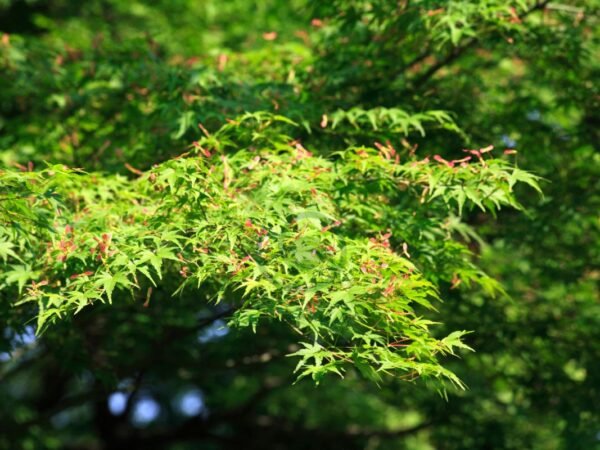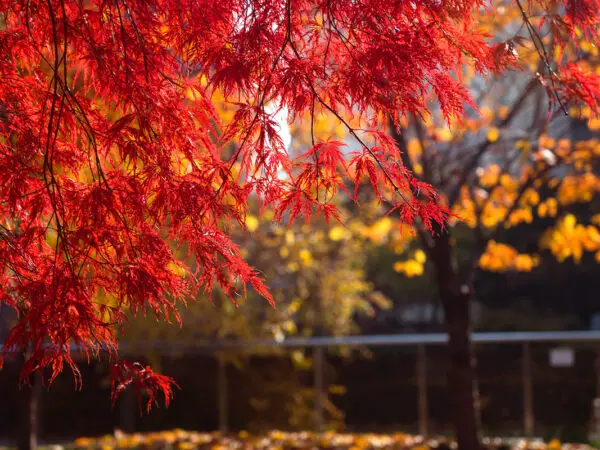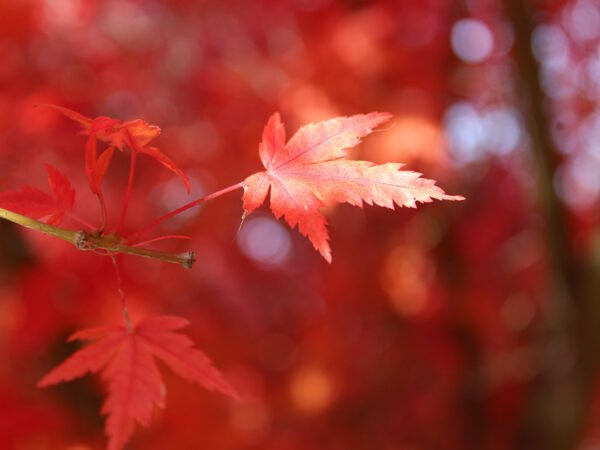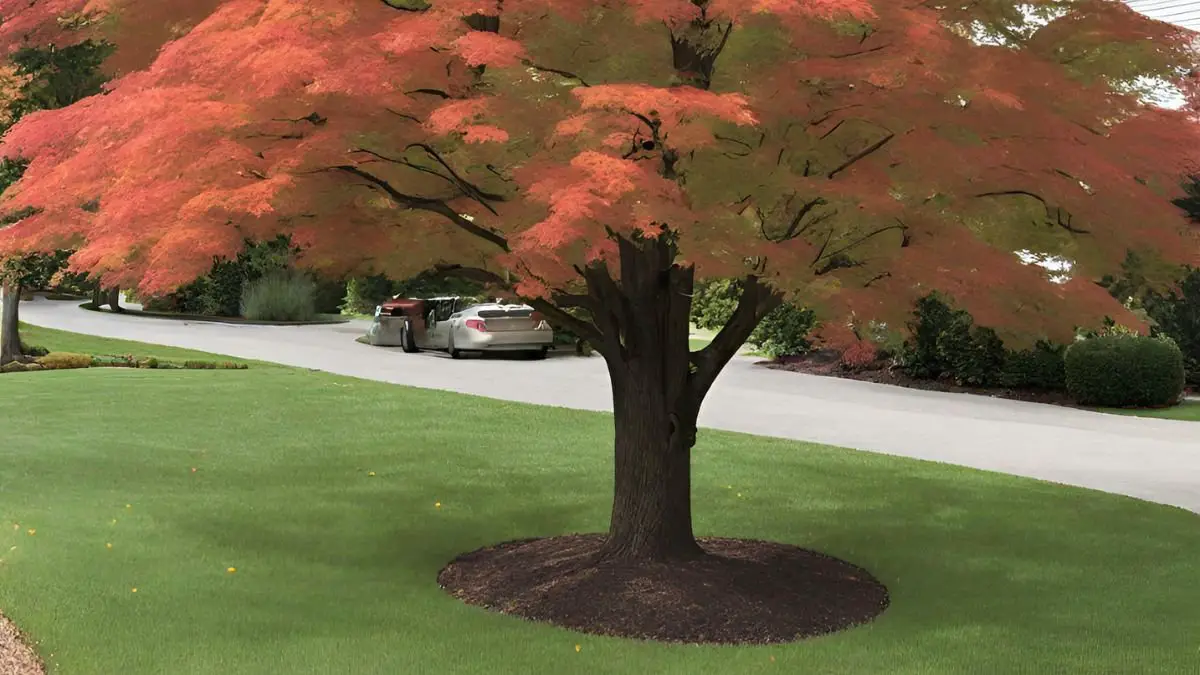
Maple Tree Fertilization is crucial for maintaining the health and vitality of your beloved maple trees. As an expert in horticulture and arboriculture, I can provide you with the essential guidance and information you need to ensure your maple trees thrive through proper fertilization techniques.
Fertilizing maple trees is essential to replenish soil nutrients, promote healthy growth, and enhance foliage color. The best time to fertilize maple trees is in the early spring before new growth begins. It's recommended to use a balanced slow-release fertilizer specifically formulated for trees, applied evenly around the drip line of the tree. Avoid over-fertilizing, as this can lead to nutrient imbalances and potentially harm the tree. Additionally, incorporating organic matter such as compost or well-aged manure can further improve soil fertility and support the long-term health of your maple trees.
In addition to proper fertilization, maintaining adequate moisture levels, pruning dead or diseased branches, and monitoring for pests and diseases are all crucial aspects of maple tree care. By following these best practices, you can ensure your maple trees continue to provide shade, beauty, and enjoyment for years to come. If you're interested in delving deeper into maple tree care, I have a wealth of knowledge and expertise to share to help you nurture your trees to their fullest potential.
Key Takeaways
- Understand the basics of maple tree care to provide a healthy environment for growth.
- Fertilization is crucial for maple trees to thrive, promoting strong roots and vibrant foliage.
- Choose the right fertilizer based on the tree's needs and soil conditions for optimal results.
- Timing is key; fertilize your maple tree during the early spring or fall for maximum absorption.
- Follow a step-by-step fertilization process to ensure proper nutrient distribution.
- Monitor dosage and frequency carefully to avoid over-fertilization, which can harm the tree.
Maple Tree Basics
Species Varieties
Maple trees come in various species, each with unique characteristics. Explore different types like Sugar Maple, Red Maple, or Japanese Maple. Consider factors such as size, leaf color, and growth rate to choose the most suitable variety for your region. Understanding the specific requirements of each maple tree type is crucial for their healthy growth.
Growth Requirements
For optimal growth, learn about the sunlight and spacing needs of maple trees. Adequate sunlight exposure is essential for photosynthesis. Proper soil drainage and aeration help prevent root rot and ensure nutrient uptake. Climate conditions play a significant role in supporting maple tree growth; consider factors like temperature and humidity levels.
Seasonal Care
Adjust fertilization schedules based on the season to promote tree health effectively. During autumn, focus on preparing the tree for winter dormancy by providing essential nutrients. In spring, encourage new growth with appropriate care routines like pruning and watering. Be vigilant about temperature changes throughout the year, as they can impact the overall health and development of maple trees.
Importance of Fertilization
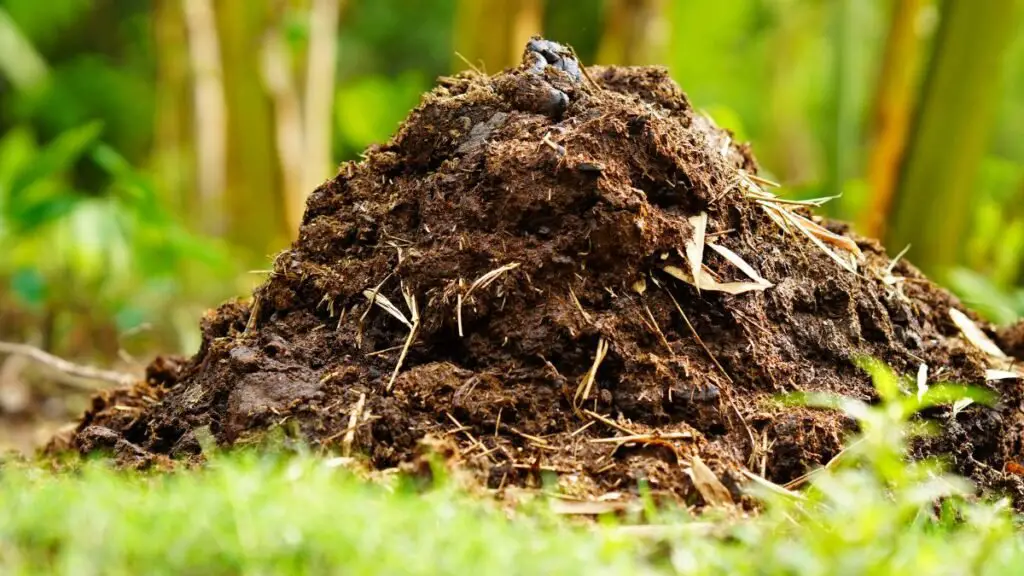
Nutrient Needs
Maple trees require essential nutrients for optimal growth, including nitrogen, phosphorus, and potassium. These nutrients play crucial roles in maple tree nutrition, supporting various physiological processes within the tree. Recognizing and addressing nutrient deficiencies is vital to ensure the health and vitality of maple trees.
- Essential Nutrients for Maple Trees:
- Nitrogen: Essential for leafy growth and overall tree vigor.
- Phosphorus: Promotes root development and flower/fruit production.
- Potassium: Enhances disease resistance and overall stress tolerance.
- Recognizing Deficiencies:
- Yellowing leaves may indicate nitrogen deficiency.
- Purplish or reddish leaves can signal phosphorus deficiency.
- Brown edges on leaves may point to potassium deficiency.
Health Benefits
Proper fertilization has positive effects on maple tree health by providing the necessary nutrients for sustained growth. Nutrient-rich soil contributes significantly to the overall well-being of maple trees, ensuring they remain strong and resilient against environmental stressors. Consistent fertilization practices offer long-term benefits, enhancing the tree's longevity and aesthetic appeal.
- Benefits of Proper Fertilization:
- Improved growth rates and foliage density.
- Enhanced resistance to pests and diseases.
- Increased tolerance to drought conditions.
- Long-Term Effects:
- Better fall coloration due to nutrient-rich soil.
- Reduced risk of premature leaf drop or stunted growth.
Choosing the Right Fertilizer
Organic vs Synthetic
Organic fertilizers, such as compost and manure, provide nutrients to maple trees gradually, promoting long-term soil health. In contrast, synthetic fertilizers deliver nutrients quickly but may lead to nutrient runoff. Considering environmental impact, organic options are more eco-friendly as they improve soil structure and reduce chemical leaching. However, synthetic fertilizers are more concentrated, requiring less product for the same effect. In terms of cost-effectiveness, organic fertilizers may cost more initially but contribute to sustainable soil fertility over time.
Nutrient Composition
When selecting a fertilizer for maple trees, it's crucial to consider the nutrient composition. Look for ratios of nitrogen (N), phosphorus (P), and potassium (K) labeled on the package. The ideal ratio for maple trees is 3:1:2 or 4:1:2, emphasizing nitrogen for healthy foliage growth. Different ratios affect tree development; higher phosphorus levels encourage root growth, while increased potassium promotes disease resistance. Understanding these nutrient compositions helps in choosing the right fertilizer to support overall maple tree health.
Optimal Fertilization Timing
Seasonal Guide
Maple trees require specific care throughout the year. In spring, fertilize with a balanced formula to support new growth. Summer demands a slow-release fertilizer to sustain tree health during hot months. Fall fertilization should focus on root development for winter preparation.
Adjusting fertilization practices by season is crucial for maple tree health. Spring applications promote leaf and stem growth, while summer feedings maintain vigor in high temperatures. In fall, concentrate on root strength to endure winter conditions effectively.
Implementing seasonal care practices is essential for maple tree vitality. Spring and summer feedings encourage lush foliage and strong branches, while fall fertilization aids in root resilience against cold weather.
Growth Phases
Recognize maple trees' various growth stages to meet their nutrient requirements adequately. Adjust fertilizer amounts based on the tree's developmental phase to ensure optimal nourishment. Understanding how growth phases impact fertilization timing enhances overall tree health.
Maple trees transition through distinct growth phases, each demanding specific nutrients. Tailor fertilization strategies according to the tree's stage of development to maximize growth potential. Adapting fertilizer applications based on growth phases optimizes nutrient uptake and utilization.
Differentiating growth phases influences the timing and quantity of fertilizer application for maple trees. By aligning feeding schedules with each phase, you enhance the tree's ability to absorb essential nutrients effectively. Matching fertilization with growth stages ensures robust and healthy maple trees.
Step-by-Step Fertilization
Preparing Soil
Before fertilizing maple trees, it is crucial to prepare the soil properly. Start by conducting a soil test to determine the pH levels and nutrient content. Based on the results, apply soil amendments to create an ideal environment for maple trees to thrive.
Applying Fertilizer
When applying fertilizer to maple trees, ensure you follow the correct techniques. It's important to achieve an even distribution of fertilizer around the tree's root zone. Consider using slow-release fertilizers, which provide a steady supply of nutrients for the maple trees' growth.
Watering Afterward
After fertilization, it is essential to understand the significance of watering maple trees. Maintaining proper soil moisture levels is crucial for facilitating nutrient absorption by the tree. Establish a consistent watering schedule that complements the fertilization routine to promote healthy growth.
Dosage and Frequency
Calculating Dosage
Calculate the appropriate fertilizer dosage based on the size and age of the maple tree. Consider the nutrient requirements specific to maple trees, ensuring they receive adequate nourishment. Avoid over or under-fertilizing by accurately calculating the amount required for optimal growth.
When determining the dosage, take into account the growth stage of the maple tree. Younger trees may require different nutrients compared to mature ones. Ensuring a balanced nutrient intake is crucial for healthy growth and development.
Scheduling Applications
Develop a consistent schedule for fertilizing maple trees throughout the year to maintain their health and vitality. Consider seasonal variations in weather conditions and growth stages when planning fertilizer applications. This ensures that the tree receives nutrients when it needs them most.
Creating a calendar to track and manage the timing of fertilizer treatments is beneficial. By keeping a record of past applications, you can adjust future schedules accordingly. This proactive approach helps in maintaining a healthy and thriving maple tree.
Signs of Over-Fertilization
Leaf Burn
Leaf burn in maple trees is characterized by brown, scorched leaf edges and dropping leaves. This issue often arises due to excessive fertilizer application, causing salts to accumulate in the soil. The buildup of salts disrupts the tree's ability to absorb water, leading to leaf burn.
Improper fertilization practices, such as applying fertilizer too frequently or using high-nitrogen fertilizers, can exacerbate leaf burn in maple trees. To address this problem, it is crucial to flush the soil with water to remove excess salts and adjust the fertilization schedule. Implementing a balanced fertilizer regimen can help prevent further leaf burn issues.
Stunted Growth
Stunted growth in maple trees manifests as smaller than average leaves, slow growth, and overall weak appearance. Nutrient deficiencies, compacted soil, and environmental stressors like drought can contribute to stunted growth. Identifying these factors is essential for promoting healthy tree development.
To combat stunted growth, it is vital to address any underlying nutrient deficiencies through appropriate fertilization practices. Regular soil testing can help determine the specific nutrients lacking in the soil, enabling targeted fertilization. Ensuring proper drainage and adequate watering can alleviate environmental stressors that impede maple tree growth.
Additional Care Tips
Pruning Techniques
Pruning plays a vital role in maintaining the health and shape of maple trees. Regular pruning helps in enhancing tree structure and promoting growth. Removing dead or damaged branches through pruning stimulates new growth.
Adequate Watering is crucial to ensure that maple trees can effectively absorb nutrients from the soil. The watering needs of maple trees vary based on soil type and weather conditions. Establishing a watering schedule that aligns with the fertilization routine is key for optimal tree health.
Common Mistakes to Avoid
Over-Fertilizing
Maple trees show signs of over-fertilization such as leaf burn, stunted growth, and excessive foliage. Excessive fertilizer can harm tree roots and disrupt nutrient absorption, leading to overall tree decline. To address over-fertilization, reduce fertilizer amounts, water the tree thoroughly to flush out excess nutrients, and monitor for improvements.
Wrong Timing
To prevent nutrient imbalances, avoid fertilizing maple trees during periods when they are not actively growing. Fertilizing outside of recommended seasonal windows can lead to nutrient wastage and environmental pollution. Establish a proper fertilization schedule based on the tree's growth cycle to optimize nutrient uptake and promote tree vigor.
Closing Thoughts
By understanding the basics of maple tree care and the importance of proper fertilization, you can ensure your trees thrive. Choosing the right fertilizer, timing its application correctly, and following the recommended dosage are essential steps in maintaining healthy maple trees. Avoiding common mistakes and being aware of signs of over-fertilization will further contribute to their well-being. Additional care tips can help you provide optimal conditions for your maple trees to flourish.
Take action now by applying these insights to your maple tree care routine. Share this knowledge with fellow enthusiasts to promote healthy tree maintenance practices. Your efforts will not only benefit your own trees but also contribute to a greener and more vibrant environment.
Frequently Asked Questions
How often should I fertilize my maple tree?
Fertilize your maple tree once a year in the early spring before new growth starts. Avoid over-fertilizing, as it can harm the tree.
Is it important to choose the right fertilizer for my maple tree?
Yes, selecting a balanced fertilizer specifically formulated for trees is crucial. Look for options with a slow-release formula to provide nutrients gradually.
What are the signs of over-fertilization in maple trees?
Signs of over-fertilization include leaf scorch, stunted growth, and excessive foliage. Monitor your tree closely after fertilization to prevent issues.
When is the optimal timing for fertilizing my maple tree?
The best time to fertilize your maple tree is in early spring before new growth appears. This allows the tree to utilize nutrients efficiently.
How can I ensure I apply the correct dosage of fertilizer to my maple tree?
Follow the instructions on the fertilizer package carefully based on your tree's size and age. Using too much fertilizer can harm your maple tree.
Image Source: Paid image from CANVA

